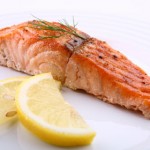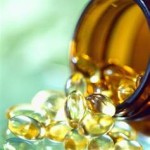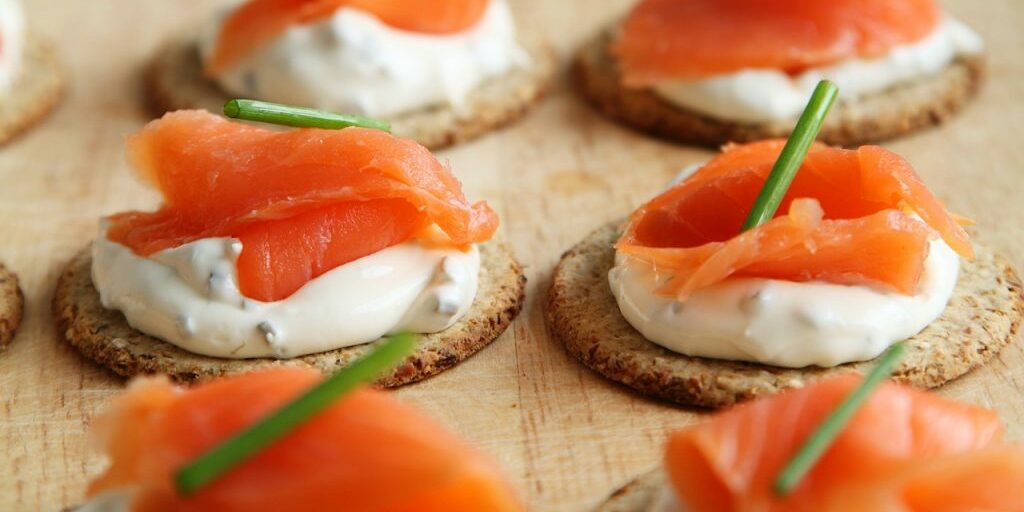We hear so much about omega 3’s today – the good, the bad and the ugly, however, all this information what with the EPA’s , DHA’s can get confusing. Here’s my way of breaking it down in a way that even I can fully understand!
We are talking about Essential Fatty Acids – essential because our bodies don’t make them – we have to get them from our food. So there’s there’s 2 different kinds of Omega’s: omega-3 and Omega-6. Omega-3’s get all the good attention, whereas Omega-6’s get a bad rap. The reason is not that Omega-6’s are essentially bad, it’s more that the ratio of 3’s – 6’s is not what it should be in our modern diet.
Our ancestor’s healthy diets contained an omega-6 to omega-3 ratio of 1:1 to 2:1, whereas the ratio content in the modern American diet is 20:1, which shows that we eat an excessive amount of omega 6’s and not enough 3’s. This ratio is vitally important because the 6’s and 3’s have different functions. When we eat too many 6’s, our body can’t metabolize the 3’s.
Omega 3’s are important for your heart and brain health and if you are suffering from depression, an inability to concentrate, type 2 diabetes, dry/itchy skin, fatigue, brittle nails and hair, or joint pain, you especially might want to check that you are getting enough of these good guys. At a global Omega-3 Summit in March, a consensus was formed saying that increasing omega-3 levels in the blood would benefit 98% of the population.
So how do we increase our 3’s and decrease our 6’s. Generally speaking you want to avoid the usual suspects like convenience and  packaged foods. Its very important to choose your meat wisely because most cattle and chicken are raised on a high omega-6 feed. This is the reason why I only buy organic poultry and organic, grass-fed beef. Read a detailed list here of foods that have a high omega-6 content. Salmon is a great choice, but it needs to be wild salmon, which is obviously much more expensive.
packaged foods. Its very important to choose your meat wisely because most cattle and chicken are raised on a high omega-6 feed. This is the reason why I only buy organic poultry and organic, grass-fed beef. Read a detailed list here of foods that have a high omega-6 content. Salmon is a great choice, but it needs to be wild salmon, which is obviously much more expensive.
 It may be better to try to get your omega-3’s from food than from supplements. This goes for all supplements because your body is better able to absorb the nutrients, however if you can’t get an adequate amount from your diet, I would supplement for sure. The upside of supplements is that the dangerous contaminants like mercury that can be found in fish, are removed. My favorite company for many reasons is Nordic Naturals – they have a fantastic selection of oils to suit almost everyone, including children and pets – yes my little pooches get their fish oils too!
It may be better to try to get your omega-3’s from food than from supplements. This goes for all supplements because your body is better able to absorb the nutrients, however if you can’t get an adequate amount from your diet, I would supplement for sure. The upside of supplements is that the dangerous contaminants like mercury that can be found in fish, are removed. My favorite company for many reasons is Nordic Naturals – they have a fantastic selection of oils to suit almost everyone, including children and pets – yes my little pooches get their fish oils too!
Foods that are rich in Omega 3 fatty acids include:
- Anchovies
- Black Cod
- Cabbage
- Canola Oil
- Cauliflower
- Cloves
- Flax seeds & Flaxseed Oil
- Halibut
- Herring (Both Atlantic and Pacific)
- Mackerel (Especially Atlantic)
- Mustard Seeds
- Oregano
- Oysters (Especially from the Pacific)
- Pumpkin Seeds (Also known as Pepitas)
- Salmon (especially wild)
- Sardines
- Scallops
- Soybeans & Soybean Oil
- Tofu
- Trout (Especially Lake Trout)
- Walnuts & Walnut Oil
I buy ground flax seeds from Wholefoods and throw them into everything I can – cookies, cakes, pancakes, oatmeal and smoothies.
To further complicate the matter, there are 2 different kinds of 3’s: EPA and DHA and they do completely different things in the body. For more detailed info on what amounts of both of these omega 3’s you should be looking to take, visit the EPA DHA Omega 3 Institute.
Finally if you want to get tested to see what your own personal omega index is, you can order an Omega-3 index kit, which you can do in the comfort of your own home.
In The Gorgeously Green Diet, I have included multiple recipes which contain foods that are loaded with Omega-3’s – so grab yourself a copy and start cooking, as cooking from scratch is really the very best way you can guarantee that you’re getting the nutrients you need.





Sophie, I was sharing this with my fitness class and realized that you are saying that salmon is a good choice, however it should be wild caught. Then, in the list salmon is noted and in parentheses says,”especially farmed raised”. I definitely follow the wild caught thinking but, this is confusing. Am I not following this correctly?
Terri
Thanks for pointing that it – it’s a typo, which I’ve just corrected!